
The Protective Clean range has been in the Philips Sonicare family since the beginning of 2018. The name of this recent addition to the Sonicare range suggests that Phillips wants to appeal to brushers who are conscious about the effective combination of their tooth cleaning and protective caring. If this is a market that the company is consciously targeting then it’s fair to assume that they’ve done their homework, and have identified a need. It certainly meets my needs of improving gum health and reducing cavities, so I’m glad they came up with it.
The series comprises of 3 different models, the 4100, 5100 and 6100. Each of their pages on the website has a variation of the phrase, “Gently does it,” which makes it clear what they’re offering. Pricing is higher than entry-level, more towards the middle of the market, with suggested retail prices of $69.99, $89.99 and $129.99 respectively, but a quick look through Amazon reveals that discounts of $10-$20 are available.
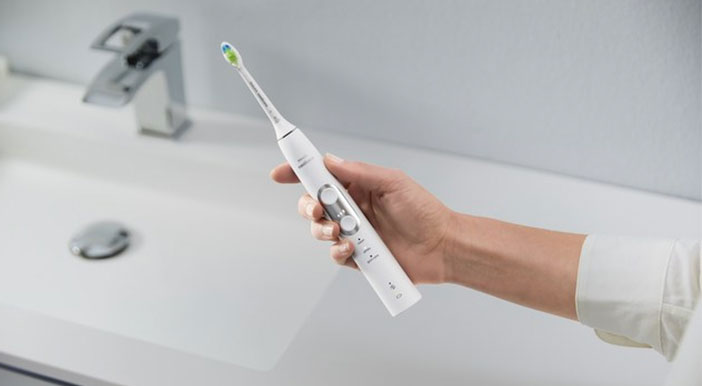
[wpsm_titlebox title=”” style=”7″][wpsm_toplist][/wpsm_titlebox]
Difference between Sonicare ProtectiveClean 4100, 5100 and 6100
[wpsm_woobox id=”1″]
From the key features of these 3 models, the base model 4100 is differentiated by the slogan, “Cleaner teeth” while the advanced 5100 focuses on healthier gums, and the top one 6100 is for whitening your teeth.
[aawp table=”76046″]
Appearance and Design
All of the Protective Clean models have the typical Philips slender profile that sets them apart from other brands, I like the fact that the handle has a sleek and slim design. It looks nice when it’s sitting on its charger in the bathroom, and it feels light in your hand. It’s not heavy at all, so I would think that even small children or older people with arthritis would be happy to use it.
- The basic model 4100 has only one distinctive button – on/off switch in the middle of the handle and comes in 2 colors on Amazon, white and black.
[aawp table=”1850″] - The 5100 offers the 2 color choices and with an extra button which changes the brushing mode between its 3 options – Clean, White and Gum Care.
[aawp table=”1852″] - The 6100 is the top model of the ProtectiveClean series, it comes in 3 colors, navy blue, pink and white silver, and also has the extra mode button to control the brushing modes.
[aawp table=”1853″]
Cleaning Modes
The ProtectiveClean family uses Philips Sonic cleaning technology to pulse water between the teeth. The combination of this and the high brush head speed is great for breaking plaque and clean it away. Clean Mode, White Mode, and Gum Care offer different versions of how the brush behaves. Clean mode runs the brush at half speed for two minutes, White mode runs at full speed for an extra 30 seconds, and gum care adds an extra minute at reduced power. This means that there is something for everyone, and you’ll have to experiment to see what you prefer.
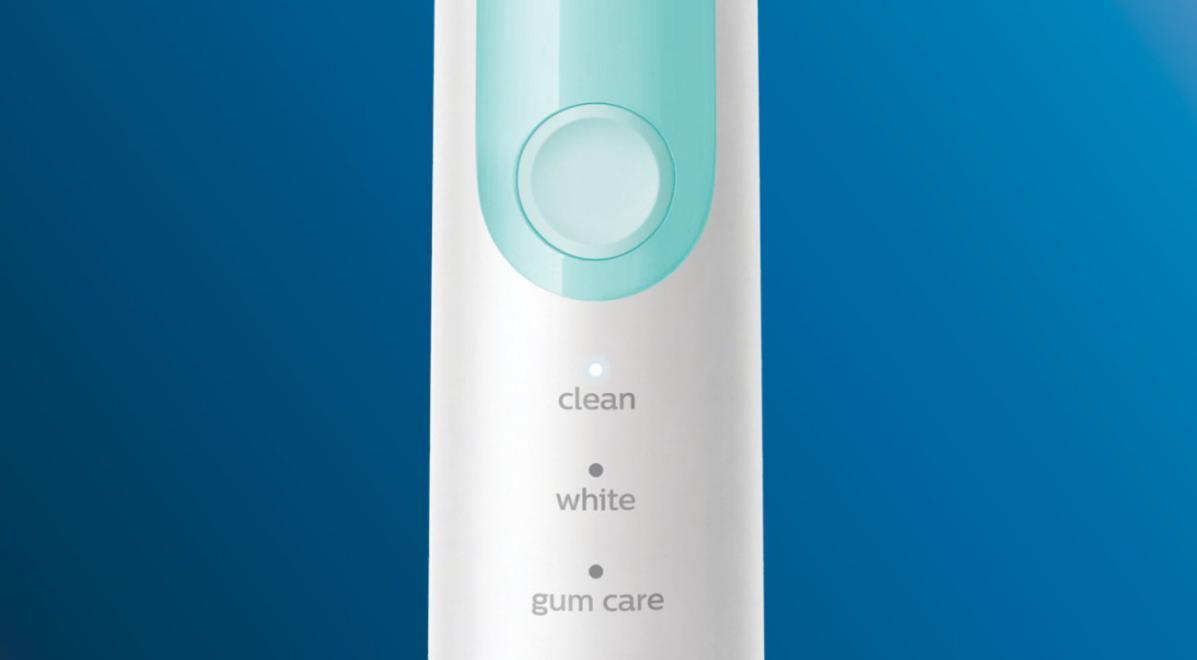
Phillips describes the way that the brush head moves as its “sonic sweeping motion” and says that this creates gentle micro bubbles which penetrate deeply between your teeth. I will believe that. It can feel quite ticklish in your mouth, but it’s a perfectly okay feeling. As I mentioned before, the Brush head speeds are fast and they are listed as being up to 62,000 movements per minute, which is quick to say the least, considering that a hummingbird can only manage 13,800! This explains that tickling feeling then!
The protective clean family also has the QuadPacer feature which tells you when to brush a different section of your mouth for the best cleaning effect. I like this because, to be honest, who stands there counting? I certainly don’t. This is one of the reasons why my dentist recommended this type of brush to me, because people generally don’t spend long enough brushing their teeth. It should be 2 minutes, with 30 seconds devoted to each quarter of your mouth. This feature takes away the need to think about it, so all you have to focus on is moving the brush head around gently until it tells you to stop. You don’t need to scrub the brush up and down by the way, just move it from one tooth to the next and let the Protective Clean do the work.
Cleaning performance
I was keen to try the ProtectiveClean 6100 because I’ve been a coffee addict for as long as I can remember. I also get gum problems, from time to time when they get sensitive and may even bleed. As the owner of a coffee grinder and an espresso machine with a milk steamer just a few feet from where I work it’s very difficult for me to avoid not drinking a lot of espressos every day. All of those coffee stains really spoil the appearance of my teeth of course, so I was glad to be given the chance of doing something about them.
The ProtectiveClean 6100 (along with some whitening toothpaste for sensitive teeth) was very nice to use and I really think it made my teeth look and feel cleaner. I’ve never had perfectly white teeth, but when I looked at them in the mirror after brushing I was pretty convinced that there was less coffee staining than before.
Battery System
All models are fitted with a lithium-ion rechargeable battery which can last for up to 2 weeks of normal use. Normal use means brushing twice daily for the recommended 2 minutes, and this is plenty of charge to help you do that. It works from 110-240v which means it will work wherever you are in the world; just add the right adapter. You need to charge it for 24 hours the first time you use it, but then you can leave it on the charger afterward. That said, it’s good practice to run the battery (and any lithium-ion battery) flat every three months, otherwise, it loses its ability to charge.
The ProtectiveClean series was created to help with gum health, which is why all models have a built-in pressure sensor. It’s important not to press down on your gums too hard when you’re brushing, and this feature reminds you to treat them with a light touch. It does this by vibrating the handle and illuminating a light to let the user know that they are pressing too hard.
I have a tendency to over brush, so I found this feature very useful. Because my teeth are crowded I often tend to press too hard. I don’t really like flossing and I only do this occasionally, because I know I have to, so make up for this I brush with extra pressure to really get the bristles into the tight spaces. As you can imagine, the pressure sensor kept going off to tell me I was overdoing it, this can be a bit annoying to start with. It felt like I was being told off by a toothbrush, but after a little while it made me change my behavior. I naturally learned how hard to press, and before long I was brushing the right way without even thinking about it. So, I’ve been taught to brush better by the Philips ProtectiveClean 6100!
BrushSync
Another handy feature that has made its way from the more expensive models down to these mid-range brushes is the BrushSync mode-pairing system (only 6100 offers this feature). When you click the brush head in place, the embedded microchip will “communicate” with the handle, and then the handle will synchronize the optimal brushing mode and pairs with the most suitable intensity automatically.
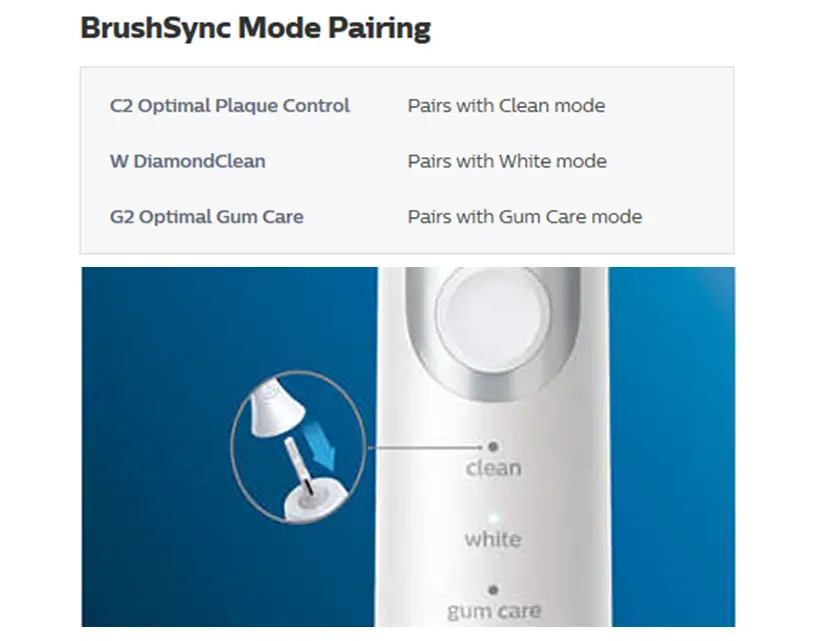
Also, the BrushSync feature means that the handle can tell you when to replace your brush heads. While the brush heads are very durable, they naturally wear out over time. This technology can tell how long you’ve been using a brush head for, and even how hard you’ve been pressing over time. When you hear a short beep and a light on the handle goes on, it’s time to switch. It’s best not to ignore it, as worn out brush heads are less effective.
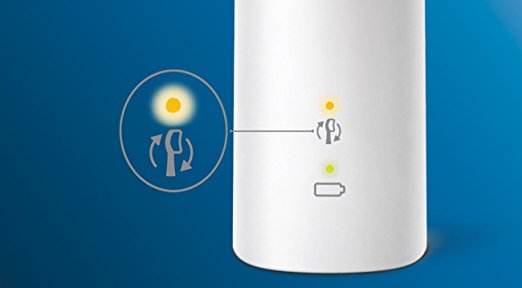
I found the BrushSync feature useful first thing in the morning because I prefer not to have to think about anything too difficult before I have had my first coffee! In the evening, I sometimes like to choose the brushing mode myself, and that is something that you can do before you start to brush on the Protective Clean 5100 and 6100 models.
Accessories included
Each of the Protective Clean Series models comes with a simple charging stand (HX6000/01). Nothing fancy, just a plastic base for the handle to sit on while it powers up. It looks fine but not flashy so there isn’t really much to say about it. It does the job. The good news is that this standard charge can be adapt with most Sonicare electric toothbrushes, You can share a charger even if you have two different Philips electric toothbrushes in your home.
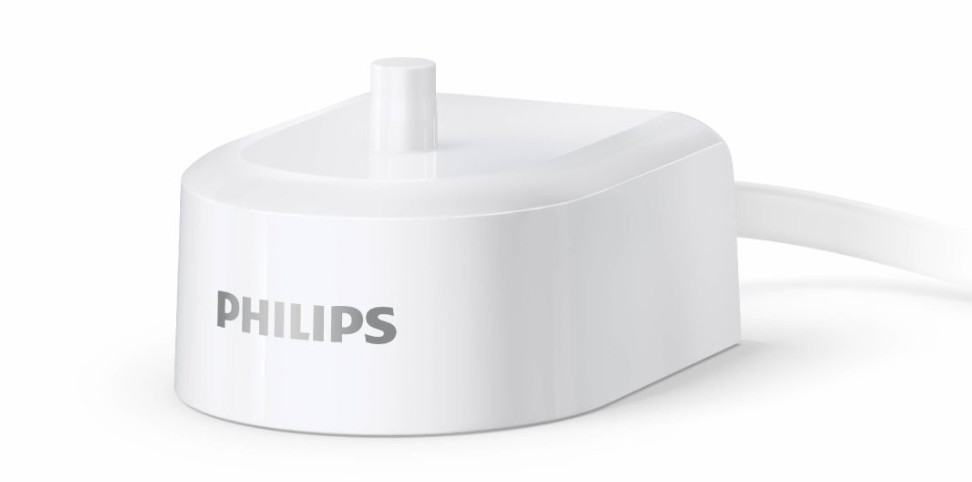
The 4100 comes with a C2 Optimal Plaque Control head. The 5100 comes with one G2 Optimal Gum Care brush head, and the 6100 comes with a ProtectiveClean head and a DiamondClean head. The handle has a little light on which tells you when you should change each head. Somehow it knows when they are wearing out.
All models come with a travel case (HX1000/01) which is handy. Again, it isn’t fancy, but it does an adequate job of protecting the unit when you’re travelling.
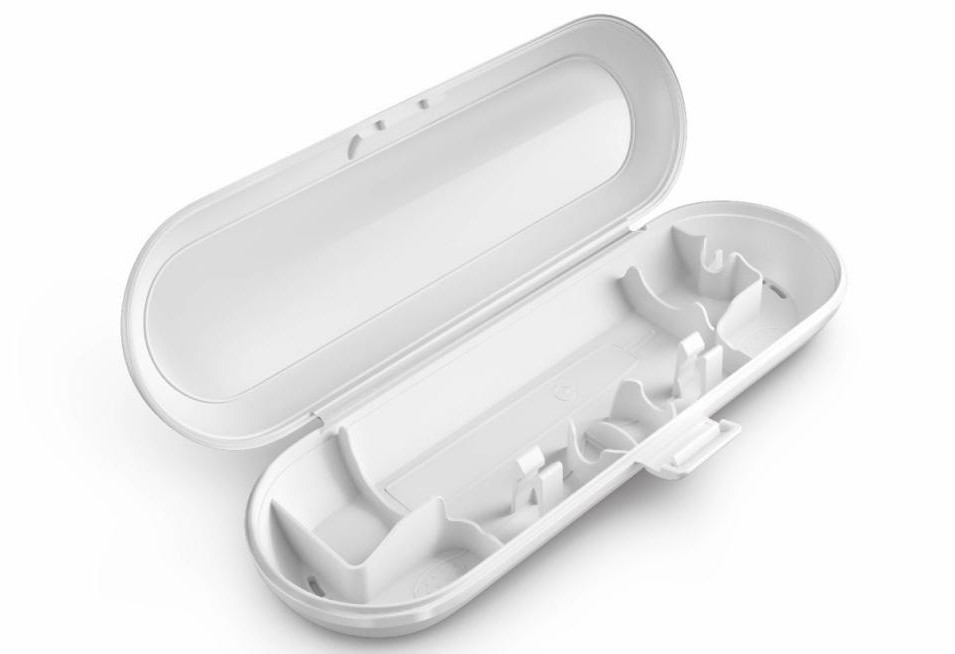
Product Reviews
[wpsm_woobox id=”2″]
ProtectiveClean 4100
It offers essential features at a low price, with a slim and attractive design that’s the same as the more expensive versions higher up in the range. You get pressure control, and the Brush sync reminder to change your brush head.
It’s a great buy for anybody who doesn’t want to spend extra money on a bunch of extras that they probably won’t use.
It has the Philips easy start feature which begins with gentle intensity that gradually ramps up over the next 14 days so that you get used to high-speed cleaning.
ProtectiveClean 5100
Essentially the same as the 4100 but you get the extra travel case, the Gum Care brush head instead of the Plaque Control one, three brushing modes, pressure control, and the BrushSync reminder to change your brush head.
ProtectiveClean 6100
The final step up gives you three modes, offering all the previous features plus three intensities, two BrushSync features, and two include brush heads. The combination of intensities and modes gives you more options for getting your teeth clean.
Pros & Cons
[wpsm_woobox id=”3″]
[wpsm_divider top=”20px” bottom=”20px” style=”dotted”]
[wpsm_column size=”one-half”]
[wpsm_pros title=”PROS:”]
- All three brushes are attractive and do a good job of cleaning your teeth
- The 4100 and 5100 are reasonably priced for what you get in terms of performance features
- Long battery life. They all hold their charge really well
[/wpsm_pros]
[/wpsm_column]
[wpsm_column size=”one-half” position=”last”]
[wpsm_cons title=”CONS:”]
- I’ve used Oral-B’s in the past, and I must say that I do like the circular motion of their brushes. Sonicare brushes use an up-and-down motion, which I don’t like quite as much, but which does get between my teeth better. My dentist commented that I had less tartar and plaque, so even though I’m not quite so in love with the motion, it is a plus.
- There is no rubber grip on the handle. You just get smooth plastic, which makes it easy to clean, but if you’re a sloppy brusher like I occasionally am then it can turn in your hand as you try to maneuver it.
- 62000 stroke/min is twice as high as that of the most previous products, although it can improve the cleaning effect, for people who first use the Sonicare electric toothbrushes for a time, they may not be able to get used to such a high brush head speed.
- I don’t think the current suggested retail price of 6100 is reasonable – if you comparing with the Sonicare FlexCare Platinum Connected or the Oral-B 3000, because I can’t find the Bluetooth and smart App support on the ProtectiveClean 6100, even if its price has exceeded $100!!
[/wpsm_cons]
[/wpsm_column]
Conclusions
[wpsm_woobox id=”4″]
Choosing the model which is right for you should not be too difficult. All of them are good value and offer the same basic features.
Whichever one you choose I think you will be as delighted as I was. It’s a solid performer the treats your gums better than some of the other brushes out there while still delivering an exceptional clean.
If you want a single speed brush then the ProtectiveClean 4100 will do a good job of cleaning your teeth, getting rid of stains in a gentle way. It’s only an extra $20 for the 5100 and for that you get 2 extra modes. If gum care and whitening are important to you and it may be worth considering. Another $30 jump gets you the 6100 and for the extra money you get a choice of 3 intensities and brush sync mode.
If this is something that appeals to you then it’s not much more to pay for it. These features used to be available only on brushes that cost a lot more money.
In my personal option, I will suggest to choose the 6100 since the older model – Sonicare HealthyWhite and Sonicare 3 Series can do the also some things like the 4100 and 5100, More importantly, as a non-new product, you have the opportunity to get more discounts.
[aawp box=”B078GVMVRH,B078GVH2VJ,B078GVDB18″ template=”table” ]
